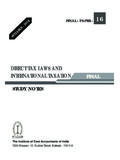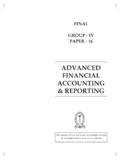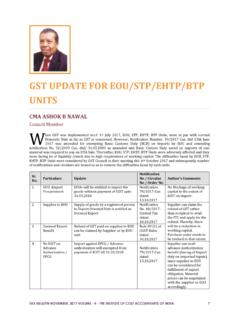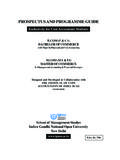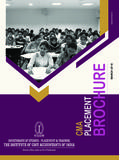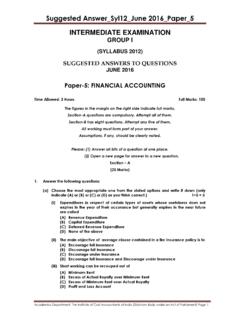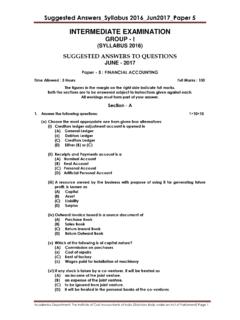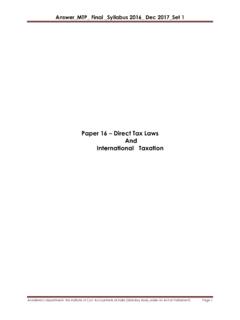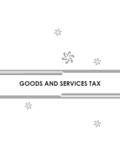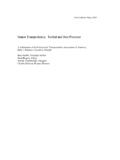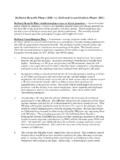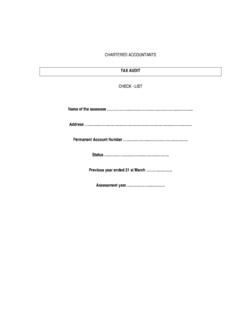Transcription of FInanCIaL aCCountInG IntermedIate - icmai.in
1 IntermedIatestudy notesIntermedIate : paper -5 FInanCIaL aCCountInGThe Institute of Cost Accountants of IndiaCMA Bhawan, 12, Sudder Street, Kolkata - 700 016syLLabus - 2016 First Edition : August 2016 Reprint : January 2018 Published by :Directorate of StudiesThe Institute of Cost Accountants of India (ICAI)CMA Bhawan, 12, Sudder Street, Kolkata - 700 at :Jayant Printery LLP352/54, Girgaum Road,Murlidhar Temple Compound,Mumbai - 400 of these study Notes is reserved by the Institute of Cost Accountants of India and prior permission from the Institute is necessary for reproduction of the whole or any part - 2016paper 5: FInanCIaL aCCountInG (FaC)syllabus structureThe syllabus comprises the following topics and study weightageAAccounting Basics25%BPreparation of FInanCIaL Statements40%CSelf Balancing Ledger, Royalties, Hire Purchase & Installment System, Branch & Departmental Accounts20%DAccounting in Computerised Environment and aCCountInG Standards15%b40%a25%C20%d15%assessment strateGyThere will be written examination paper of three hoursobJeCtIVesTo gain understanding and to provide working knowledge of aCCountInG concepts, detailed procedures and documentation involved in FInanCIaL aCCountInG aimsThe syllabus aims to test the student s ability to.
2 Understand the framework of aCCountInG systems and the Generally Accepted aCCountInG Principles Prepare necessary FInanCIaL statements related to different business entities Construct FInanCIaL statements for understandability and relevance of stakeholdersskill set requiredLevel B: Requiring the skill levels of knowledge, comprehension, application and : aCCountInG basics25% of for Special Transactionssec-b : preparation of FInanCIaL statements40% of Final Accounts of Profit Oriented organizations, Non-Profit Organizations and fromIncomplete Accountssec-C : self balancing Ledgers, royalties, Hire purchase & Installment system, branch & departmental accounts20% , Hire-Purchase and Installment and Departmental Accountssec-d : aCCountInG in Computerised environment and aCCountInG standards15% of Computerised Standards (Specified only)section a : aCCountInG basics [ 25 marks] of aCCountInG : aCCountInG - Meaning, Scope and Significance of aCCountInG - aCCountInG Principles, Concepts and Conventions -Capital and Revenue Transactions Depreciation - Rectification of aCCountInG for Special Transactions Bills of Exchange - Consignment - Joint Venture - Insurance Claims (Loss of Stock and Loss of Profit).
3 Section b : preparation of FInanCIaL statements [40 marks]3. Preparation of Final Accounts of Profit Oriented organizations, Non-Profit Organizations and from Incomplete Records (i) Preparation of FInanCIaL statements of Profit Oriented organizations: P&L Account, Balance Sheet. (ii) Preparation of FInanCIaL Statements of Non-Profit making organizations: Preparation of Receipts & Payments Account, Income& Expenditure account and Balance Sheet.(iii) Preparation of FInanCIaL Statements from incomplete records (Single entry) 4. Partnership Accounts Admission, Retirement, Death, Treatment of Joint Life Policy ,Dissolution of partnership firms including piece meal distribution, Amalgamation of partnership firms, Conversion of partnership firm into a company and sale of partnership firm to a companysection C: self balancing Ledgers, royalties, Hire purchase & Installment system, branch & departmental accounts [20 marks]5.
4 Self-Balancing Ledgers6. Royalty Accounts, Hire Purchase and Installment Branch and Departmental d: aCCountInG in Computerized environment and aCCountInG standards [15 marks]8. Computerized aCCountInG System Features, Significance, Grouping of Accounts, Ledger hierarchy, aCCountInG Packages and their selection criteria 9. aCCountInG Standards (AS-1, AS-2, AS-7, AS-9, AS-6 and AS-10 has been replaced by revised AS-10) study note 1 : Fundamentals of Basics Generally Accepted aCCountInG Principles Concepts and Conventions Capital & Revenue Transactions aCCountInG for Depreciation Rectification of Errors 70study note 2 : aCCountInG for special Bills of Exchange Consignment aCCountInG Joint Venture Accounts Insurance Claim (Loss of Stock and Loss of Profit) 143 study Note 3 : Preparation of FInanCIaL Statments of Profit Oriented Introduction Preparation of FInanCIaL Statements Bad Debts 185 study Note 4 : Preparation of FInanCIaL Statments of Not-for Profit Preparation of FInanCIaL Statements of Not-for Profit Organization 197study note 5.
5 Preparation of FInanCIaL statements from Incomplete Preparation of FInanCIaL Statements from Incomplete Records 231study note 6 : Admission of Partner Retirement of Partner Death of Partner Dissolution of a Partnership Firm Insolvency of a Partner Amalgamation of Firms and Conversion to a Company Conversion or Sale of a Partnership Firm to a Company 348study note 7 : self balancing Self Balancing Ledger 359study note 8 : Royalties 375study note 9 : Hire-purchase and Installment Hire-Purchase and Installment System 391study note 10 : branch and departmental Branch Accounts Departmental Accounts 457study note 11 : Computarised aCCountInG Computerised aCCountInG System 487study note 12 : aCCountInG AS 1: Disclosure of aCCountInG Policies AS 2: Valuation of Inventories AS 7: Construction Contracts AS 9: Revenue Recognition AS 10: Property, Plant and Equipment IND AS 523financial aCCountInG basicsBusiness is an economic activity undertaken with the motive of earning profits and to maximize the wealth for the owners.
6 Business cannot run in isolation. Largely, the business activity is carried out by people coming together with a purpose to serve a common cause. This team is often referred to as an organization, which could be in different forms such as sole proprietorship, partnership, body corporate etc. The rules of business are based on general principles of trade, social values, and statutory framework encompassing national or international boundaries. While these variables could be different for different businesses, different countries etc., the basic purpose is to add value to a product or service to satisfy customer business activities require resources (which are limited & have multiple uses) primarily in terms of material, labour, machineries, factories and other services. The success of business depends on how efficiently and effectively these resources are managed. Therefore, there is a need to ensure that the businessman tracks the use of these resources.
7 The resources are not free and thus one must be careful to keep an eye on cost of acquiring them as the basic purpose of business is to make profit, one must keep an ongoing track of the activities undertaken in course of business. Two basic questions would have to be answered:(a) What is the result of business operations? This will be answered by finding out whether it has made profit or loss.(b) What is the position of the resources acquired and used for business purpose? How are these resources financed? Where the funds come from?The answers to these questions are to be found continuously and the best way to find them is to record all the business activities. Recording of business activities has to be done in a scientific manner so that they reveal correct outcome. The science of book-keeping and aCCountInG provides an effective solution. It is a branch of social science. This study material aims at giving a platform to the students to understand basic principles and concepts, which can be applied to accurately measure performance of business.
8 After studying the various chapters included herein, the student should be able to apply the principles, rules, conventions and practices to different business situations like trading, manufacturing or years, the art and science of aCCountInG has evolved together with progress of trade and commerce at national and global levels. Professional aCCountInG bodies have been doing intensive research to come up with aCCountInG rules that will be applicable. Modern business is certainly more complex and continuous updating of these rules is required. Every stakeholder of the business is interested in a particular facet of information about the business. The art and science of aCCountInG helps to put together these requirements of information as per universally accepted principles and also to interpret the results. It is interesting to note that each one of us has an accountant hidden in us. We do see our parents keep track of monthly expenses.
9 We make a distinction between payment done for monthly grocery and that for buying a house or a car. We understand that while grocery is a monthly expense and buying a house is like creating a resource that has indefinite future use. The most common aCCountInG record that each one of us knows is our bank passbook or a bank statement, which This study Note Generally accepted aCCountInG aCCountInG concepts and capital & Revenue aCCountInG for Rectification of Errorsstudy Note - 1fundamEntals of accountingFundamentals of Accounting2 FInanCIaL accountingthe bank maintains for us. It tracks each rupee that we deposit or withdraw from our account. When we go to supermarket to buy something, the cashier at the counter will record things we buy and give us a bill or cash memo . These are source documents prepared for the transaction between the supermarket and us. While these are simple examples, there could be more complex business activities.
10 A good working knowledge of keeping records is therefore necessary. Professional aCCountInG bodies all over the world have been functioning with the objective of providing this body of knowledge. These institutions are engaged in imparting training in the field of aCCountInG . Let us start with some basic definitions, concepts, conventions and practices used in development of this art as well as order to understand the subject matter with clarity, let us study some of the definitions which depict the scope, content and purpose of aCCountInG . The field of aCCountInG is generally sub-divided into:(a) Book-keeping(b) FInanCIaL aCCountInG (c) cost aCCountInG and(d) Management Accountinglet us understand each of these concepts.(a) book-keepingThe most common definition of book-keeping as given by J. R. Batliboi is Book-keeping is an art of recording business transactions in a set of books. As can be seen, it is basically a record keeping function.
